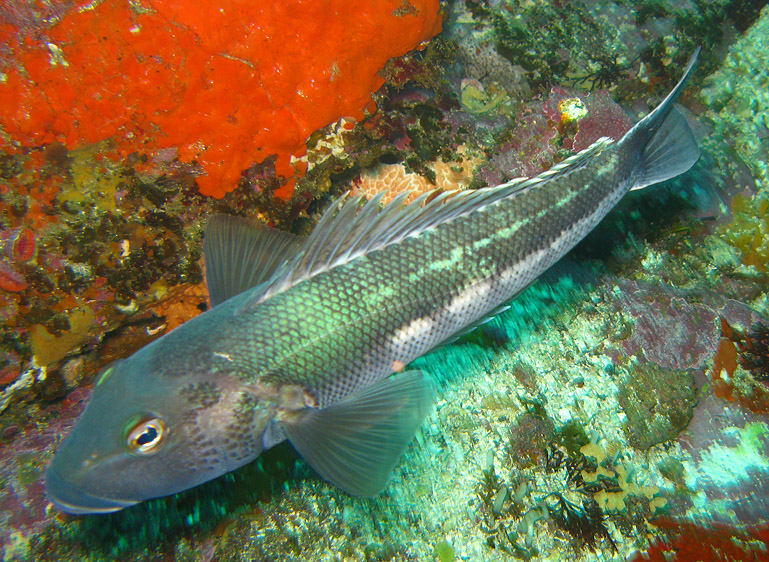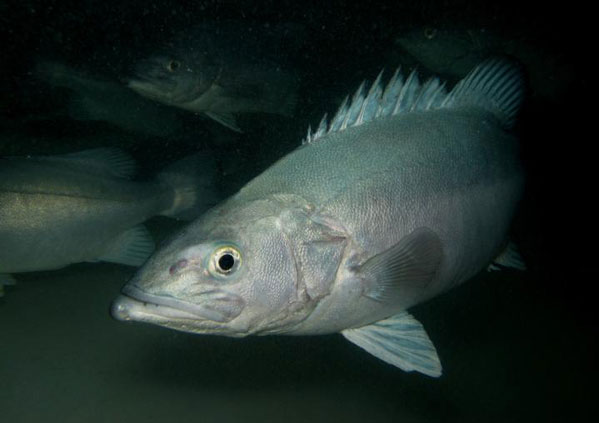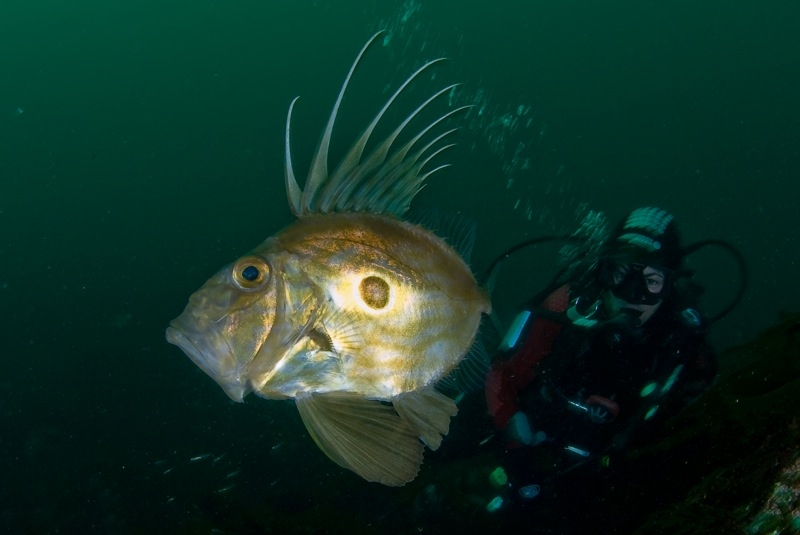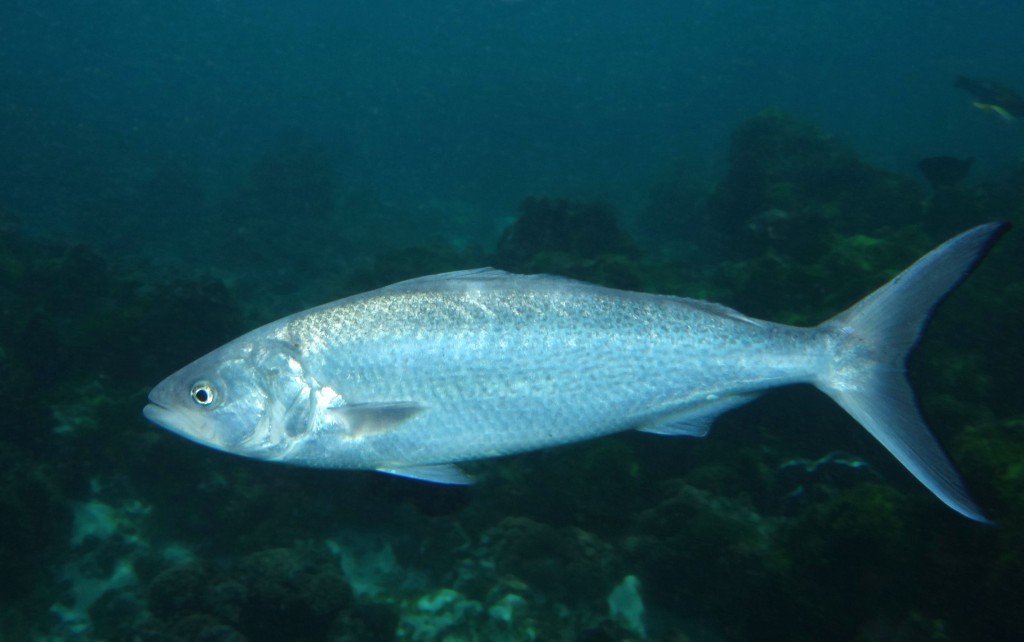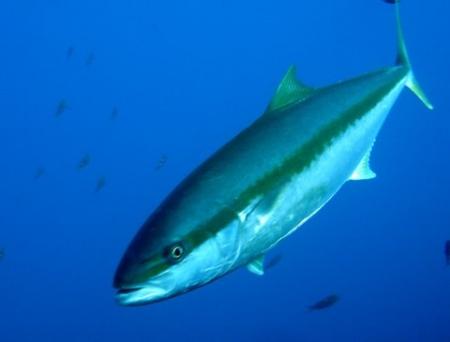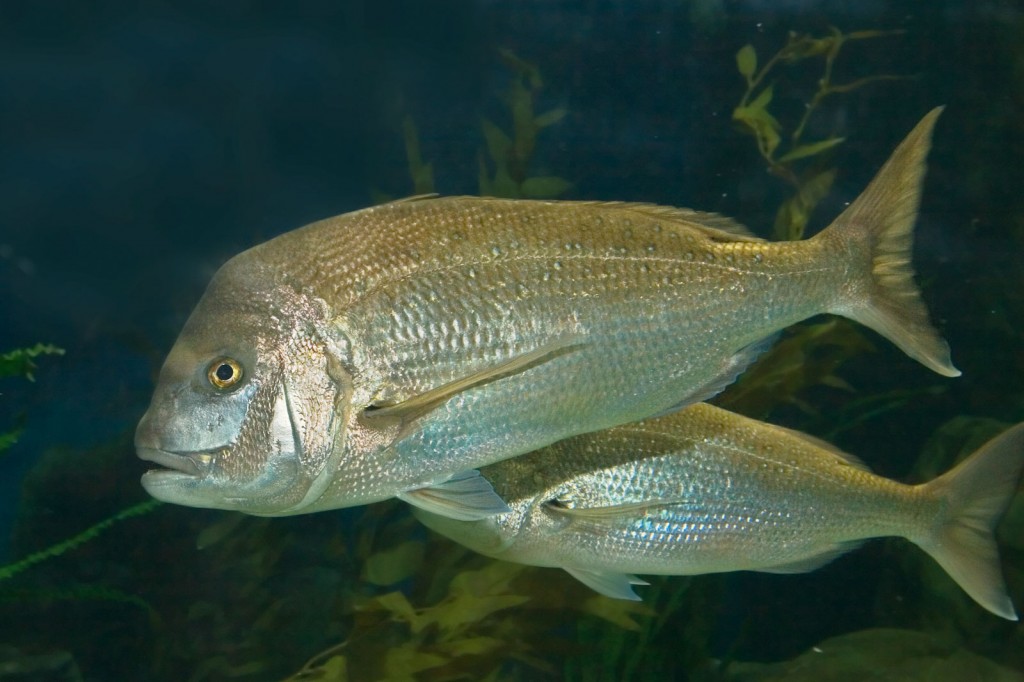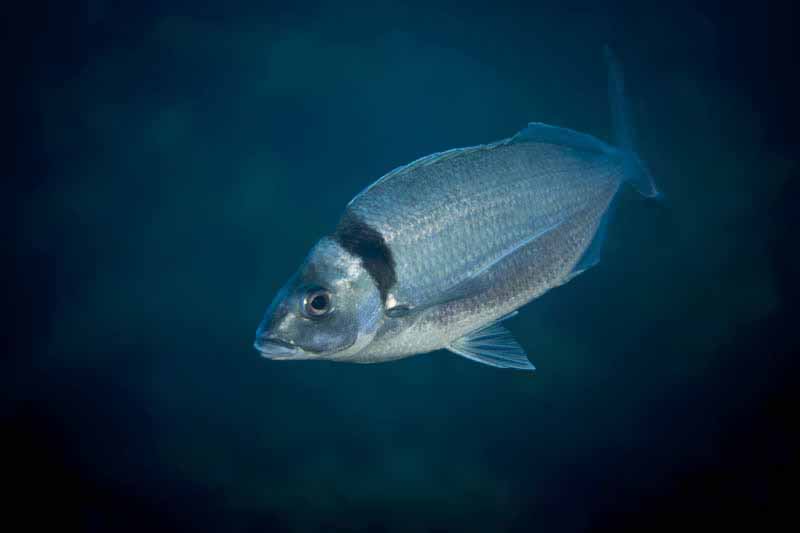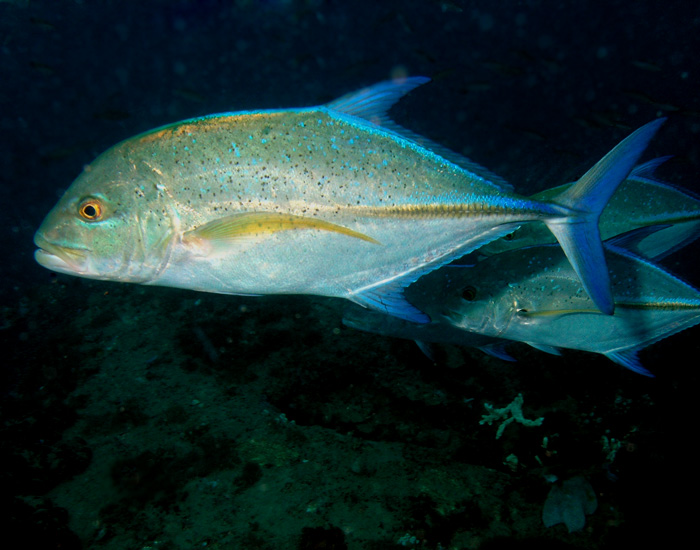Scientific Name
Seriola lalandi lalandi
Legal Length & Limit
75cm, Bag Limit 3
Description
Kingfish, Yellow Tail, or Southern Kingfish (Seriola lalandi lalandi) are a solid-bodied elongated / compressed pelagic game fish. Kingfish are easily recognizable by their distinct yellow tails and (dorsal, pectoral, caudal) fins. They are generally dark green in colour, with a white stomach and a yellow stripe, which runs along the pectoral line to their caudal fin.
They are fast-swimming, streamlined carnivores with smooth scales. Their large yellow caudal fin is small in surface area, which results in little turbulence giving them excellent power and swimming ability.
Most Kingfish are counter–shaded which is more noticeable in the bigger adult fish, where they are bluish / greenish on the top half of the lateral line and silvery white below the lateral line. This results in an effective camouflage common in ocean- going fish. The darker top half camouflages it by making the fish difficult to see from above because it closely resembles the dark colour of the water. The lighter bottom half has the same effect when looking upward toward the light from the ocean floor. The silvery-white stomach blends in with the light rays shining downwards, making it difficult to see them against the light.
The minimum size for M.A.F regulations is 75cm, with a daily bag limit of three per day – which is ridiculously generous. A Kingfish of 20-25kg would feed an entire family. Conscientious spearo’s should limit themselves to one fish per day if it’s at least 1m or more in length.
Habitat & Feeding
Kingfish are a typical pelagic schooling fish however, one can encounter juvenile Kingfish hunting in the shallows. The depth at which Kingfish are found can vary, as they do often move into the shallows to hunt. Divers have recorded them in depths ranging from shallower reefs and estuaries, to deep pinnacles reaching and exceeding depths of 50m.
Generally, they prefer rocky reef structures and pinnacles; with current moving past them. Current in the water is one of the critical success factors to finding the fish. Another promising location that generally has a higher success rate would be FADs (Fish Attracting Devices) such as navigational buoys, or man-made FADs in the water.
They are most abundant in the summer, but can be found year-round in far northern waters. Most divers however have to wait until the summer months when the water temperature warms up and they move further south down the coast.
New Zealand Kingfish will hunt up and down the country chasing smaller fish species such as baitfish, piper, garfish, squid, octopus, koheru and kahawai.
Often seeing these smaller fish in schools is a good sign that you may run into a Kingfish, as the Kingfish will be actively seeking them. Shooting smaller fish such as cohere, or the use of burley, have proven effective in bringing in a Kingi.
Age & Growth
It usually takes a Kingfish up to 21 years to reach its full growth size of 2.5 metres or more and they can weigh up to 40-45kgs. These are considered to be ‘large’ Kingfish, in reality the 15-20kg range is the most common catch.
Their lengths vary from smaller “rats” of 75cm up to bigger adults in the 2m range. Growth parameters show that female Kingfish take longer to grow than males do, however females reach a greater overall length than the males. Adult Kingfish are easily identifiable by the faded colouring on them.
Smaller “rats” have distinct green and white colours.
Food Quality
Kingfish are excellent eating fish with thick white fillets; they have a pleasant flavour and only a few large bones. Kingfish have a moderate oiliness to them and they are easily adaptable to a variety of cooking methods. They make excellent sashimi and to cook, are best prepared in foil on the BBQ or baked to retain flavour and to keep the fillets moist. Avoid overcooking them as this results in a dry texture. Using a citrus or garlic marinade prior to cooking will also aid in the retention of moisture.
Hunting Techniques
Before attempting to hunt these fish – one should always seek advice and ensure that he/she has adequate experience.
So you’re keen on landing a big Kingfish, but where and how do you find them? New Zealand waters are renowned for some of the biggest Kingfish in the world – international and local spearfisherman hunt these mighty fish right here on our doorstep.
From early October through to April, we see Kingfish populate the North Island but with current climatic changes, we are seeing them as far as the Deep South. Kingfish love rocky structures with dominant underwater pinnacles and currents that hold baitfish.
Hunting Kingfish can be very rewarding and challenging at the same time. The ecstasy of fighting very powerful fish and the hunt to locate them; for some is a bigger rush than diving deep.
The fun begins once the Kingfish have been located. They will most often swim in schools, hunting in packs; the fish will work a pattern of coastline, revisiting the same pinnacles every 20-40 minutes. Inquisitive by nature the Kingfish will most often come right up to you – stealth is not an art that you have to master. Presenting yourself as a foreign object in the water is enough to entice them. Due to their curious nature, keeping your body calm and motionless in mid water is enough to draw them in.
In most situations the Kingfish will swim towards you to see what you are, usually a few smaller fish will lead the school; then within seconds you could have hundreds of fish milling around you or the rocky structure below.
When hunting on a deep pinnacle, the Kingfish will usually approach you. The approach is crucial! Always dive away from them, and not directly onto them. The best method is to dive in the general direction that they are swimming. Diving towards them will only make them spook and detour away. Keeping your eyes slightly hidden, you should lock the fish in your peripheral vision as this allows you to approach them indirectly without scaring them. Plan your descent so that you intercept their swimming direction and execute your shot from there. Shouting through one’s snorkel underwater can also draw in a disinterested Kingfish.
Where to Shoot the Fish
Careful placement of a shot will ensure your odds of landing a Kingfish; they have very soft flesh and tearing often results in lost fish.
When spearing the fish – try to land your shaft just above the pectoral fin along the lateral line behind the gill plate; this will provide a solid holding shot which will effectively bleed the fish out, resulting in less struggle and a quicker death.
Once a solid holding shot has been achieved, the diver can surface and begin the battle. An injured Kingfish can be deadly; many a diver has drowned from entanglement – caution / alertness is paramount. An injured Kingfish will have a violent and powerful first run; most often it will head for the rocks below trying to dislodge the spear. The most important factor is to keep your line away from your body and fins. Kingfish will swim in circles so it is vital that you do the same to avoid becoming entangled.
Once the fish has tired somewhat – get a mate to apply a second holding shot – this will often calm down a violent contender.
Eventually when it runs out of steam, you can secure the fish by grabbing it under the gills and wrapping your legs around it – delivering a quick “iki” to seal the deal.
Equipment
Ideally you will have a decent-sized gun, bungee /hard-line and a sufficient float with one of two flasher rigs attached. We’ll examine these in more detail next.
Flashers
Using flashers is an effective way to attract Kingfish into range. There are two types of flashers that can be used: drop flashers and in-line flashers. When diving on deeper pinnacles, both in-line and drop flashers can be used to lure Kingfish closer to the surface and within range of a shot.
Drop Flashers Fig.1
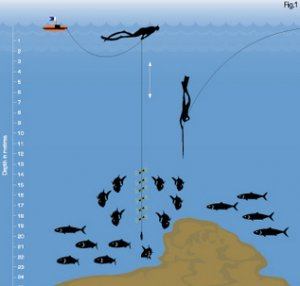
A drop flasher is used with two divers – one diver will concentrate on ‘teasing’ or working the flasher – while the other will wait for the Kingfish and dive down to intercept the fish once it is in range. Essentially one diver is the ‘bait’ while the other is the shooter.
To work the flasher you have two options: firstly unwind the flasher to the desired depth which should be a depth to which you and your dive buddy can safely dive. You want to be able to reach your dive partner if he gets into any trouble – so it is paramount that you can both hit the same depth. If the pinnacle is deeper than you can safely dive, one would use the flasher to attract the fish up from the bottom. Unwind your flasher down to the sides of the pinnacle and pull it up and down; the Kingfish, being very curious, will investigate it and swim in circles around it. At this stage you can keep ‘teasing’ /‘jigging’ the flasher and raise the Kingfish up – while the second diver can descend and take the shot.
The second option is to unwind the flasher to a safe diving depth and lock it off so it won’t unwind any further. Holding the float in your hand, you can dive with the float to the desired depth. Once at your limit, you can ‘jig’ the flasher a few times and then let it go – the float will rise to the surface along with the flasher, flashing its way to the surface; leaving you free to watch for an approaching Kingfish.
In-line Flashers Fig.2
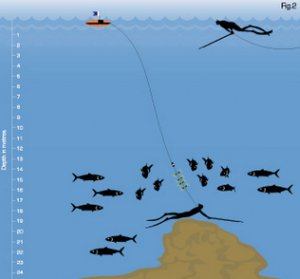
This is an effective way to bring Kingfish in when you’re descending. The in-line flasher is a series of smaller flashers attached to your float line. The flashers are approximately 2m above you and, as the diver descends, the momentum while diving will make the flashers spin/move. The in-line flasher keeps teasing as you dive, which eliminates the need for a separate diver to jig it. It is however, wise to have someone spot for you, while you dive to the bottom – to make sure that you surface safely.
Speargun Requirements
A decent long range speargun is best. When selecting the speargun you should consider accuracy and range as the most important factors. The most commonly used size is a 120cm rail-gun – using a 130cm or 140cm gun however will increase your shooting range. The more range you have on a shot- the easier your job. See below:
Shaft Requirements
An important factor to consider is having your shaft balanced with your speargun. For targeting Kingfish, a shaft not exceeding 7.5mm in thickness would be very effective. A 7.1mm shaft with a 130cm rail-gun, is a well-balanced set up delivering a long and devastating shot.
Floppers vs. Slip-Tip
A well-placed shot using a standard shaft with a flopper will hold effectively – yet a slip-tip is usually a guaranteed fish on the boat! A slip-tip will penetrate the fish and provide a “back-up” so in the case that your shaft did get dislodged – the slip-tip would remain in the fish acting as a wishbone. When selecting a slip-tip you do need to ensure that it’s balanced and will not cause your shaft to drop during flight resulting in an inaccurate shot.
It is very important to mention once again: treat these powerful fish with respect, dive within your limits, and if you are not comfortable with the shot don’t take it!

